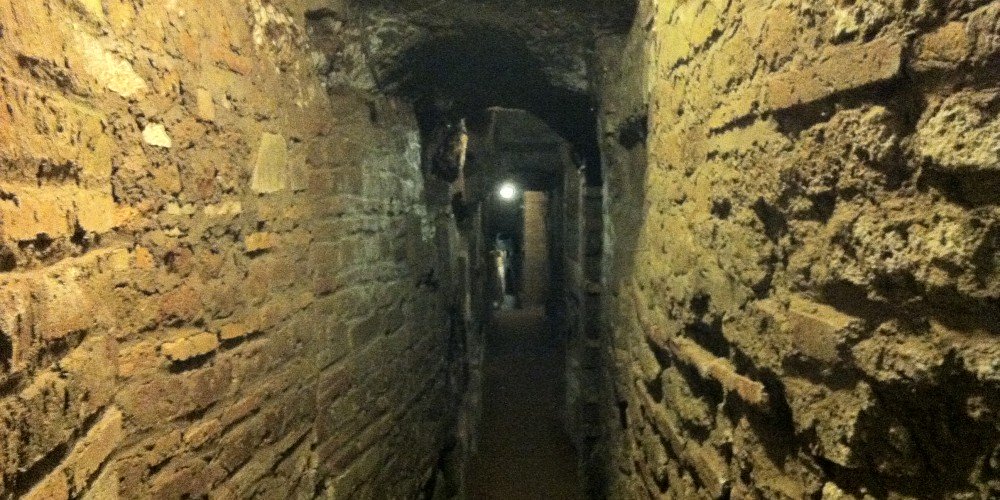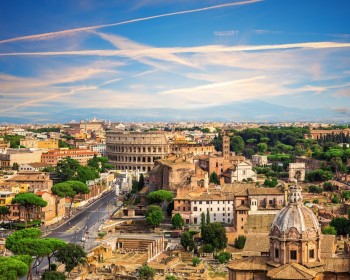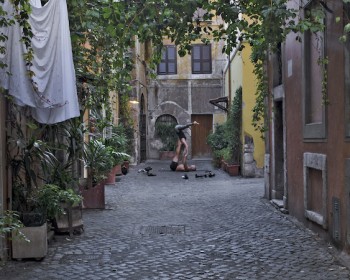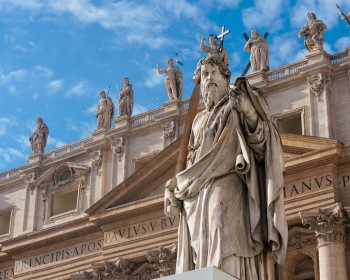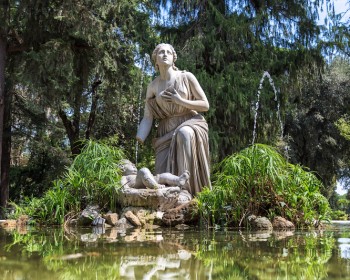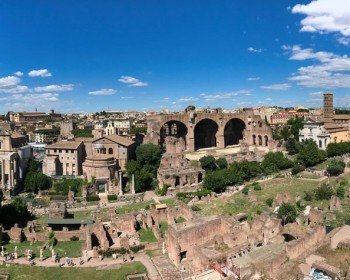The Catacombs in Rome are ancient, underground burial places, scattered in the outer areas of the Eternal City. There are about 40 catacombs in and around Rome: most of them are Christians, but you can find also Pagan and Jewish ones. The first catacombs were built in the 2nd century, in an effort to tackle the shortage of land for burials. Some scholars, though, said catacombs were used to hide the body of persecuted Christians. These burial places are a very interesting thing to discover when visiting Rome, since they contain priceless examples of frescoes and sculptures from the early Christian Art.
--> BOOK A CHRISTIAN HERITAGE PRIVATE TOUR IN ROME
What do catacombs look like from the inside?
These burial tunnels were excavated inside the soft volcanic tuff rock under Rome, a material which is ideal to build tunnels. It is very soft when first exposed to air, thus easy to excavate, but after a while it gets harder, helping building made from it keep well preserved during time. Roman catacombs are made up of underground passages out of whose walls graves were dug. They were generally laid out vertically, but there are also other typologies of catacombs: “arcosolium”, an arched niche, enclosed under a carved horizontal marble slab; “cubicula”, burial rooms containing bodies of all the family and “cryptae”; chapels decorated with frescoes, for rich people and finally “formae”, niches dug on the floor of corridors, a solution invented when space started to finish.
In Ancient Rome bodies were usually cremated and their ashes were kept in pot or urns. Sometimes urns were put in a colombarium: this word comes from the Latin for “Dove”, since these burial places resembled the compartmentalized housing for doves and pigeons. Unlikely from Romans, the Etruscans, like many other European peoples, used to bury their dead in underground chambers and so did the Christians, who preferred to preserve the bodies of their deads intact to prepare for the Resurrection.
Christians in Rome started building large-scale catacombs from the 2nd century AD, along Roman roads, like the Via Appia, the Via Ostiense, the Via Labicana, the Via Tiburtina, and the Via Nomentana. They were placed outside the walls of the city, mainly for hygienical reasons but also for religious ones. Tunnels were excavated from tufo, a soft vulcanic rock, very common to find outside the city. It was almost impossible for most of the lower classes and the slaves to buy land for burial purposes, so using the tuff caves outside Rome seemed an appropriate solution to bury their deads.
Catacombs are usually made of different layers (up to four) and you can access them through steep stairs and going through countless corridors, some completely in the dark, some lit by skylights of wells that opened to the outside. Along these tunnels Romans carved rectangular niches: here they put the coffins containing the bodies and sealed the hole with marble slabs or bricks.
What happened to catacombs during the centuries?
Burials inside Catacombs started declining after 380 AD, when Christianity finally became state religion in Ancient Rome. Many people still wanted to be buried alongside Christian martyrs, but they slowly began to prefer burying their deads in Church Cemeteries. In the 6th century only martyrs were buried in catacombs and by the 10th century these burial places were basically abandoned. Important holy relics were later moved to above-ground cemeteries and basilicas.
For many centuries catacombs in Rome were neglected, until they were accidentally rediscovered in 1578. Many archaeologists started looking for more catacombs to identify and map them, while other looted them in search of gold or precious, only to find dead bodies… It was only in the 19th century that the first extensive study about the Catacombs was published by archaeologist Giovanni Battista De Rossi. More catacombs were discovered in the mid 1950s near Rome. Today Catacombs are mantained by the Papacy, which is also responsible for further excavations and restoration works.
